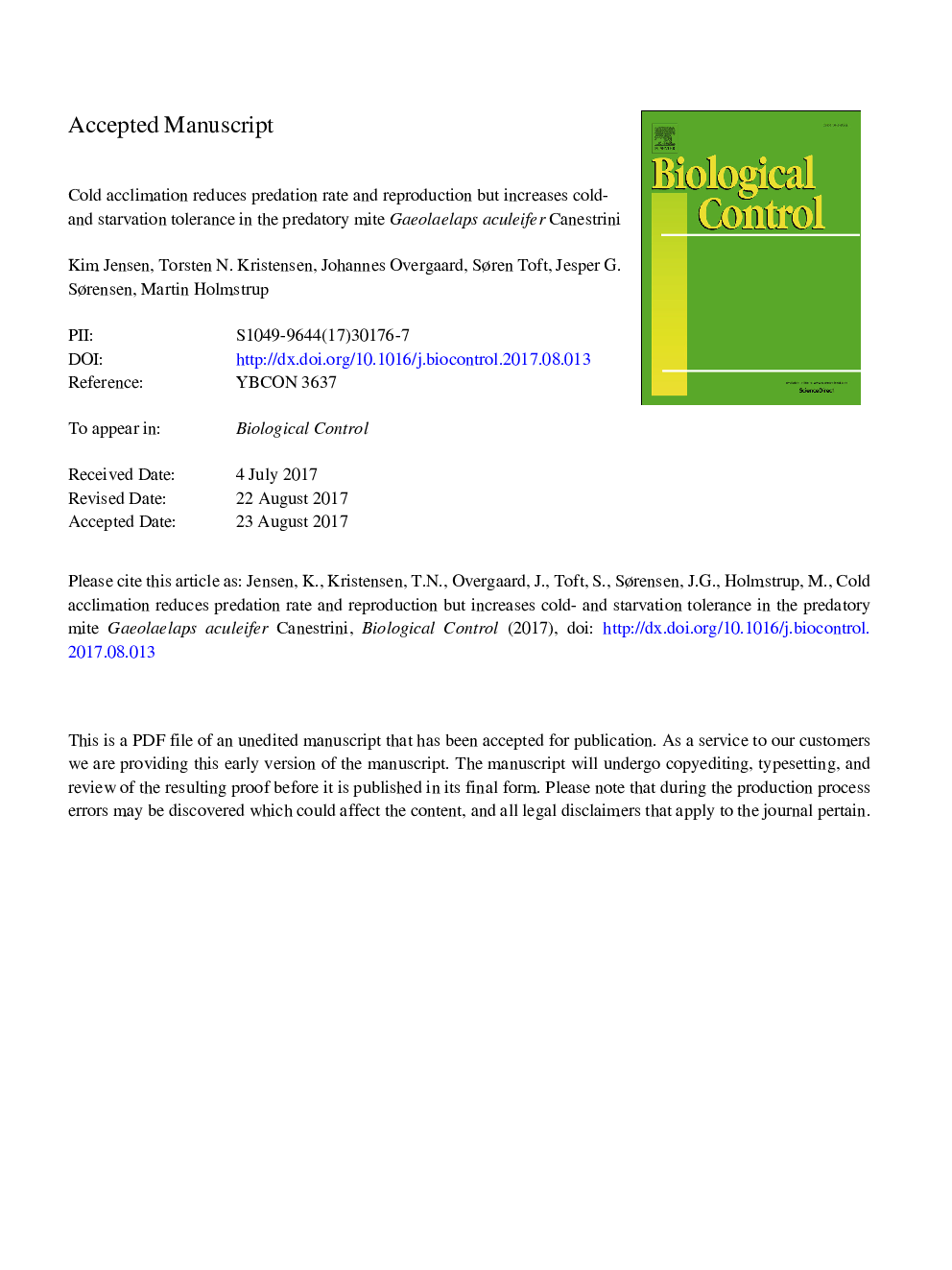| کد مقاله | کد نشریه | سال انتشار | مقاله انگلیسی | نسخه تمام متن |
|---|---|---|---|---|
| 5760737 | 1624220 | 2017 | 35 صفحه PDF | دانلود رایگان |
عنوان انگلیسی مقاله ISI
Cold acclimation reduces predation rate and reproduction but increases cold- and starvation tolerance in the predatory mite Gaeolaelaps aculeifer Canestrini
دانلود مقاله + سفارش ترجمه
دانلود مقاله ISI انگلیسی
رایگان برای ایرانیان
کلمات کلیدی
موضوعات مرتبط
علوم زیستی و بیوفناوری
علوم کشاورزی و بیولوژیک
علوم زراعت و اصلاح نباتات
پیش نمایش صفحه اول مقاله

چکیده انگلیسی
Ectotherms respond to their thermal environments by physiological acclimation, which increases tolerance to thermal extremes and may increase field performance. However, acclimation often has costs, and increased performance in some traits may be associated with reduced performance in other traits due to trade-offs. We investigated effects of thermal acclimation on predation, reproduction, starvation tolerance, and locomotor activity in the predatory mite Gaeolaelaps aculeifer Canestrini at 10, 15, and 20 °C after seven days of exposure to either of the same three temperatures, following rearing at 20 °C. To test for effects of cold acclimation on cold tolerance, another set of mites were acclimated at each of the three temperatures over four days including an additional group at 5 °C, and survival was assayed following a 24 h exposure to â2 °C. Our results showed highest cold- and starvation tolerance but lowest predation and reproduction across test temperatures in mites acclimated to 10 °C. These relationships were intermediate after 15 °C acclimation and opposite after 20 °C acclimation. Locomotor activity was unaffected by acclimation temperature. Since predation and reproduction of G. aculeifer are lowered across temperatures after cold acclimation, we recommend keeping cultures at 20 °C without cold exposure until release in the field when used against heavy pest infestations. However, if using G. aculeifer to keep small infestations minimized, we recommend using cold acclimated mites that better tolerate low temperature and low prey availability. Such thermal and metabolic robustness could be advantageous if predatory control agents are introduced in agroecosystems in early spring to prevent establishment of pest populations.
ناشر
Database: Elsevier - ScienceDirect (ساینس دایرکت)
Journal: Biological Control - Volume 114, November 2017, Pages 150-157
Journal: Biological Control - Volume 114, November 2017, Pages 150-157
نویسندگان
Kim Jensen, Torsten N. Kristensen, Johannes Overgaard, Søren Toft, Jesper G. Sørensen, Martin Holmstrup,